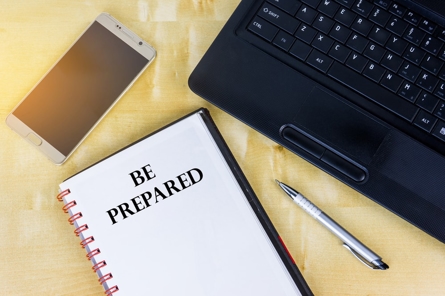
Business disruptions can come out of nowhere. If a disaster strikes, having a plan in place to keep business as usual can reduce your risk of permanently closing your doors. Since about 40 to 60 percent of small businesses never reopen their doors after a disaster, according to the Federal Emergency Management Agency (FEMA), it's crucial to create a continuity plan before a disaster occurs. Use these tips from the experts at ServiceMaster Restore to create your own business continuity plan.
Key features of a business continuity plan
In order to draft an effective business recovery plan, your focus should be on ensuring that your staff and resources are protected and able to function if a serious event threatens your operations. A thoughtful, well-rounded business recovery plan should be able to do the following:
- Minimize long-term interruptions
- Reduce the severity of a disruption
- Lessen financial loss
- Expedite restoration services
- Prevent you from closing your doors permanently
To help you address each of these areas in your own business Disaster Restoration plan, use the following tips from the pros.
1. Designate a team
Before you begin creating a business recovery plan, put together a preparedness and response planning team to help you strategize. Make sure each member understands his or her responsibilities if an unexpected event happens. Work together to identify what processes and assets would need to be maintained for your business to continue running during a catastrophe, and formulate realistic recovery strategies.
2. Assess threats
Identify all potential threats to your business, including natural disasters like fires, floods, earthquakes and hurricanes. While the likelihood of a major natural disaster occurring may be rare, there might be plenty of other threats that could wreak havoc on your business such as a power outage, data breach or equipment malfunction. Make a list of every threat so you can create a preparedness plan for each.
3. Gather contact information
Your business plan should include vital contact information. Some people from whom you should collect numbers, addresses and other contact information, include the following:
- Staff, including their emergency contacts
- Customers
- The business's insurance company
- Financial institutions
- Reputable disaster restoration companies
After all contact information is documented, write out details about how you can stay in contact with staff both during and after the disaster. That way, everyone is informed about what to do, where to go and any next steps.
4. Identify essential staff and inventory
Make a list of all of your staff. Then, identify which jobs you would consider critical if you suffered a major business interruption. Determine which office equipment each staff member would need to be able to perform his or her work, such as a computer, desk and phone. Consider additional inventory you'd need for your business, including servers and software.
5. Determine ways to protect and access the company's data
Keeping your business' important data and sensitive information backed up on a regular basis can help you immensely during a disaster. Store financial records, login credentials, employee records and business emails on a cloud-based platform as well as a reliable external hard drive. That way, you can have quick access to vital business records and information during recovery efforts.
6. Determine an off-site location where staff can work
If you must work remotely following a disaster, it's important that employees know where they should go. Find safe spaces out of which your staff can work and include multiple routes they can take to get there, in case the most common route is blocked off because of disaster.
7. Create an emergency preparedness kit for your office
This kit should include essentials that can help your staff, customers and business survive a disaster. The emergency preparedness kit for your company should include at least the following items:
- Food
- Water
- Copies of your business continuity plan
- Flashlights
- Batteries
- First aid kits
- Tool kits
- Battery-powered radios
8. Practice your plan
Once you've developed your business recovery plan, practice it with your team. Run regular exercises to determine what works and what doesn't. Make any updates as necessary to keep things running smoothly. With regular practice, your team will feel more confident about what to do if a disaster actually does strike during work hours. When you feel confident that your business continuity plan will work, hand out copies of the plan to all staff members that they can review as needed.
With the right business continuity plan in place, your business is more likely to survive a disaster and reopen its doors. If you need help creating your own business recovery plan, call the experts at ServiceMaster Restore. With our pre-loss planning services, we can work with you to create a unique plan that includes the best action items your company should take if the unexpected hits your area. With the proper tools, planning and resources, we're focused on getting you back to business as usual.
